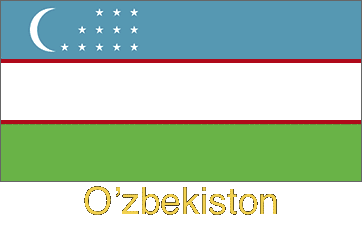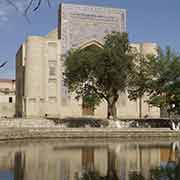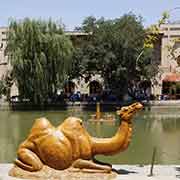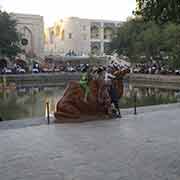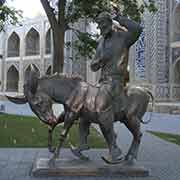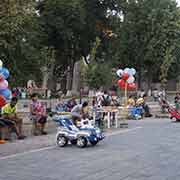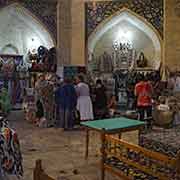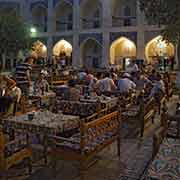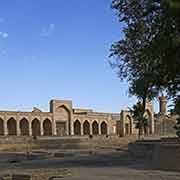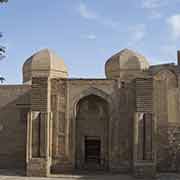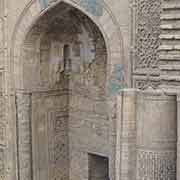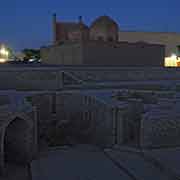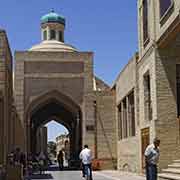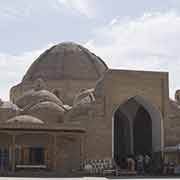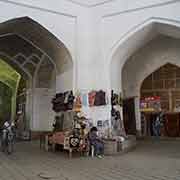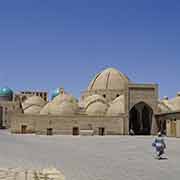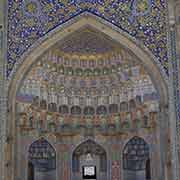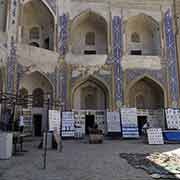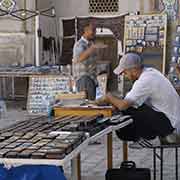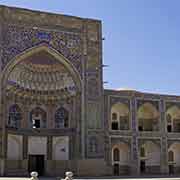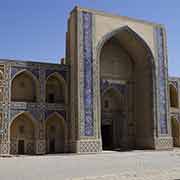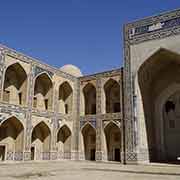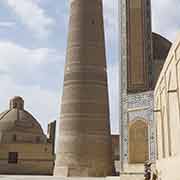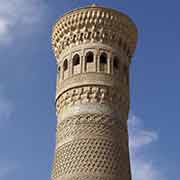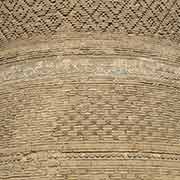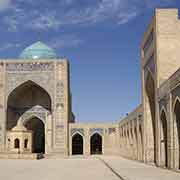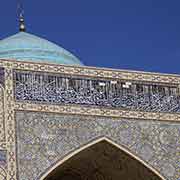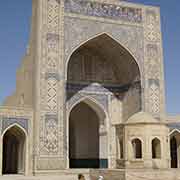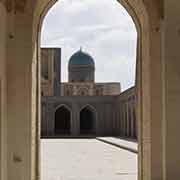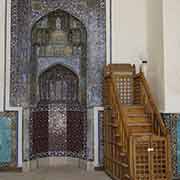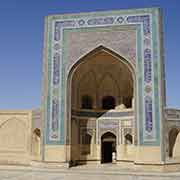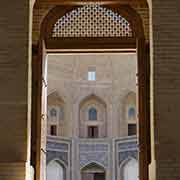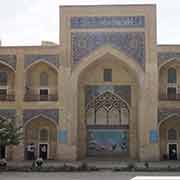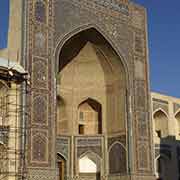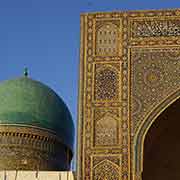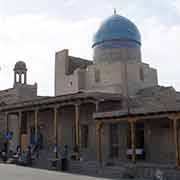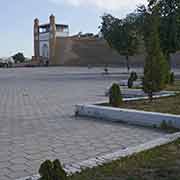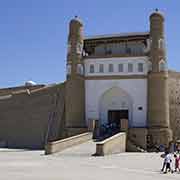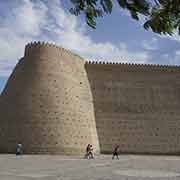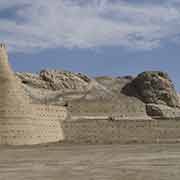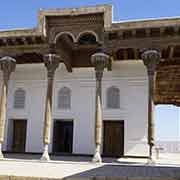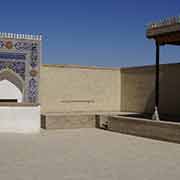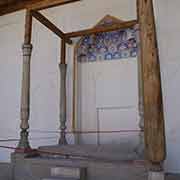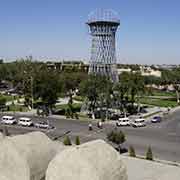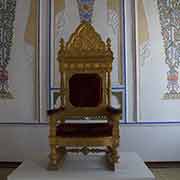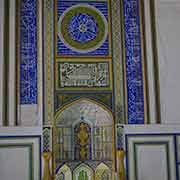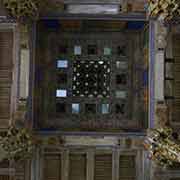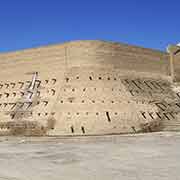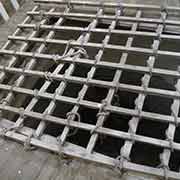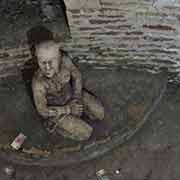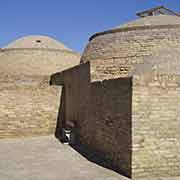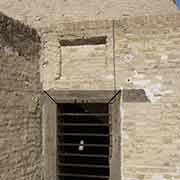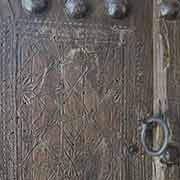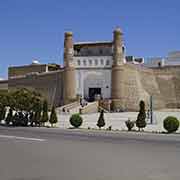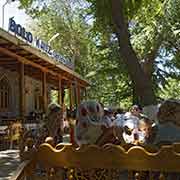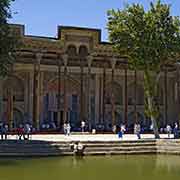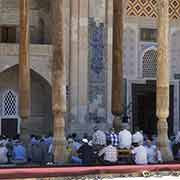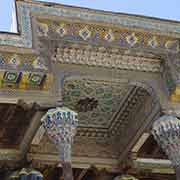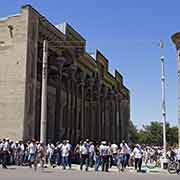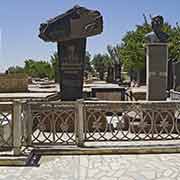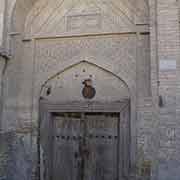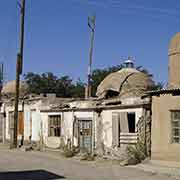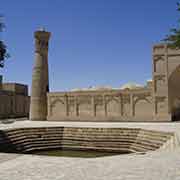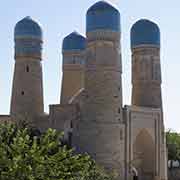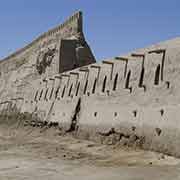Photos of Bukhara: the historic centre, Uzbekistan
Bukhara: the historic centre
Bukhara (Buxoro in Uzbek), is a city-museum, with about 140 architectural monuments; UNESCO has listed the historic centre of Bukhara, with its numerous mosques and madrasas, as a World Heritage Site. Located on the Silk Road, the city has long served as a centre of trade, scholarship, culture, and religion. The region around Bukhara has been inhabited for at least five millennia, and the city has existed for half that time. From the 6th century CE, Turkic speakers gradually moved in, but the city was seized by the Samanid Empire in the year 903; this was a Sunni Iranian empire, that existed from 819 to 999 and during that time Bukhara became a major intellectual centre of the Islamic world, second only to Baghdad.
you may then send it as a postcard if you wish.
Between 1500 and 1785 Bukhara was a Khanate, ruled first by Shaybanids, a Persianized dynasty of Mongol origin and later by the Janid Dynasty. It had a thriving slave trade. Over the course of the 18th century, emirs had slowly gained effective control of the Khanate of Bukhara and in 1785 it became the Emirate of Bukhara upon the assumption of rulership by the Manghit emir, Shah Murad. Because these rulers were not descended from Genghis Khan, they staked their legitimacy on Islamic principles and took the Islamic title of Emir instead of Khan. But in 1868, the emirate lost a war with Imperial Russia, which had colonial aspirations in the region. Russia annexed much of the emirate's territory, including Samarkand. In 1873 the remainder became a Russian protectorate and was soon surrounded by the Governorate-General of Turkestan. In the early 20th century there were calls for reform but the conservative emir, Mohammed Alim Khan, was unwilling to loosen his grip on power; in Russia the Bolshevik Revolution had just taken place and reformists turned to the Bolsheviks for military assistance. After an unsuccessful assault in March 1920, the Red Army under General Michael Frunze attacked Bukhara and Emir Alim Khan fled to Dushanbe and later Kabul, in Afghanistan. On 2 September 1920 the emir’s Ark (citadel) was destroyed and the Emirate of Bukhara was replaced with the Bukharan People's Soviet Republic. This lasted until 1925 when the city was incorporated into the Uzbek Soviet Socialist Republic.
In the latter half of the 20th century Dari- and Tajik- speaking refugees from the war in Afghanistan and civil war in Tajikistan have sought refuge in Bukhara and also Samarkand and integrated in the local Tajik population; they would prefer these cities would become part of Tajikistan. It is widely assumed that the population of the city consists mainly of Tajik-speaking Tajiks, with ethnic Uzbeks forming a growing minority: some who identify as “Uzbek” actually speak Tajik as their first language.
Today Bukhara is Uzbekistan's fifth-largest city, with a population of slightly under a quarter of a million people. It has many architectural monuments, with the famous Kalyan minaret dominating the historical centre of the city. The huge Kalan mosque, completed in 1514, can hold 12,000 people. The Lab-i-Hauz, the area around a pond, is the centre of fine madrasahs, religious schools, with the 16th century Kukeldash Madrasah the largest; the Nadir Divan-Beghi Madrasah is now the venue of cultural performances.


